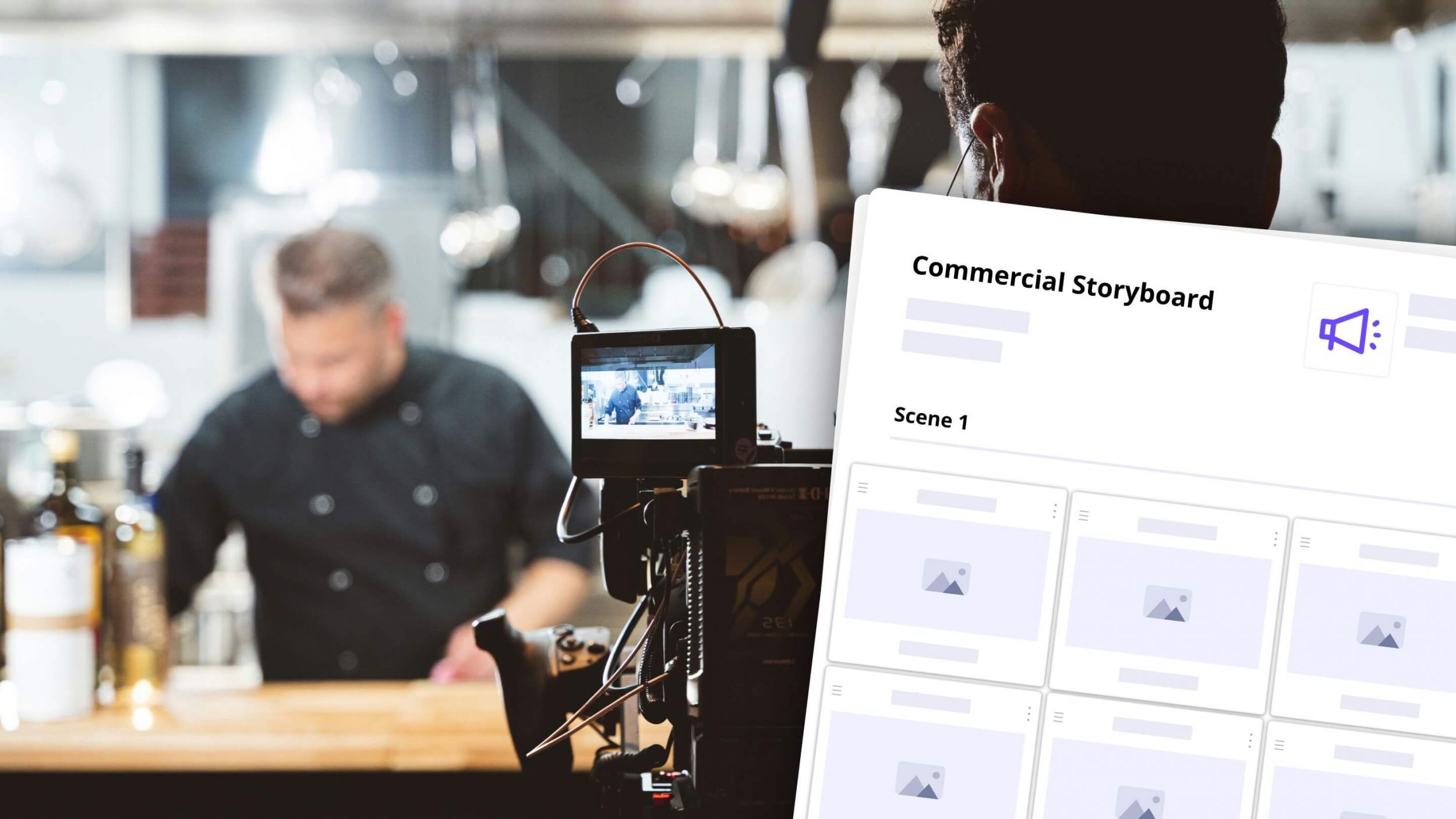Oftentimes, it can be difficult for creatives in advertising to express their abstract ideas to clients. The best way to do this is by creating something tangible to visually present your ideas to your clients. One of the best tools at achieving this is the commercial storyboard. If storyboards are new for you, stick around. We’ll take a dive into how to create a storyboard that will elevate your advertisement.
Commercial storyboards defined
What a commercial storyboard is
We often associate storyboards with films, but they can be used for a variety of purposes. A well-planned commercial usually has a board.
COMMERCIAL STORYBOARDS DEFINITION
What is a commercial storyboard?
A commercial storyboard is a visual outline for an ad spot. It contains panels for each shot set up which contain an image and all the pertinent information needed to achieve it. Ideally, a commercial storyboard will be a detailed representation of what the final product will eventually look like.
Typically, when a commercial board is complete, it will be shared with the client to get their sign-off before a shoot.
Elements of a commercial storyboard
- Images/drawings
- Shot details
- Description of action
- Storyboard arrows
When all is said and done, your commercial storyboard should look something like this:
Creating a commercial storyboard
Building a commercial storyboard in 5 steps
We’re going to outline how to create a storyboard using StudioBinder’s software, but this process is universal. Let’s get started.
1. Decide on structure
Even if you are working with a pre-written script for your video advertisement, it’s important to understand the general structure of your ad. Most ad’s follow the following structure: hook, problem, solution, combat rebuttals, and a call to action.
These five components of an advertisement are meant to engage and entice a consumer into purchasing a service or product. Keep this structure in mind as you storyboard your advertisement.
Which shots fall into each segment of this structure? How does this affect the ad? Which part of the structure has more shots? These are questions to ask when creating and troubleshooting your ad’s storyboard.

2. Read carefully
Before you get drawing, make sure you know the script like the back of your hand. Some things to keep in mind while reading: What is the focus of this ad? Is there a main character? How is the product being highlighted?
Knowing the answer to these questions will allow you to create a more purposeful storyboard.

3. Add your images
To add the visual depth to your commercial storyboard, upload images for each shot. These shots can be images you’ve sketched, photographs you’ve taken, or similar stills that you will base your shot off of.
Commercial storyboards are meant to help you refine your ideas as well as prepare for the production of your advertisement. Utilize the spec fields in a way that best benefits your advertisement.

4. Fill out the details
Next, add your shots into your storyboard. Once you add a shot, you’ll have various fields to customize your shot. These fields vary from shot description, subject, shot size, shot type, types of camera movement movement, types of lenses, and more.

Shots in an advertisement vary greatly. Utilize these fields to be extra specific. For example, in the subject line you can specify whether it is a product shot , b-roll, model shot, etc.
A common tool for advertisements is the macro lens. Macro lenses are perfect for shooting close up product shots. If you do utilize a macro lens, be sure to specify it in the “Lens” field.
Another field to utilize when storyboarding your advertisement is the “Equipment” field. This can be important for specific ads like car advertisements that require aerial shots from a drone.
5. Start sharing
Once your commercial storyboard is complete with details and visuals you can print and share it with other members of the production. Simply add collaborators on the StudioBinder interface to share the storyboard digitally. You can also print the storyboard to physically share copies of it with your director, cinematographer, client, etc.

Up Next
Make your storyboard
Now you know how to make a storyboard for commercials; it’s time to put pen to paper. Or mouse to desktop. You get what we mean– it’s time to get started. Use StudioBinder’s app so you can focus on what matters.
Up Next: StudioBinder Storyboard Software →
Showcase your vision with elegant shot lists and storyboards.
Create robust and customizable shot lists. Upload images to make storyboards and slideshows.
